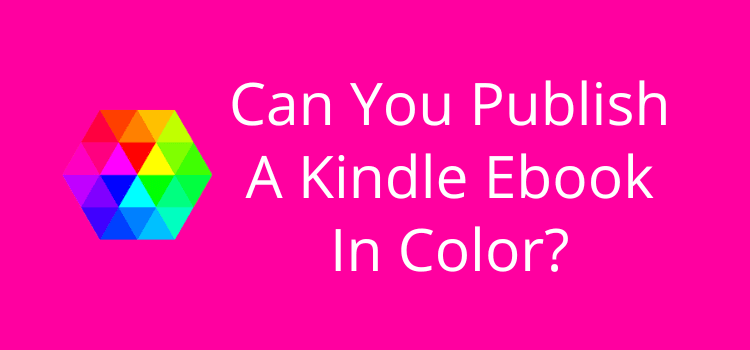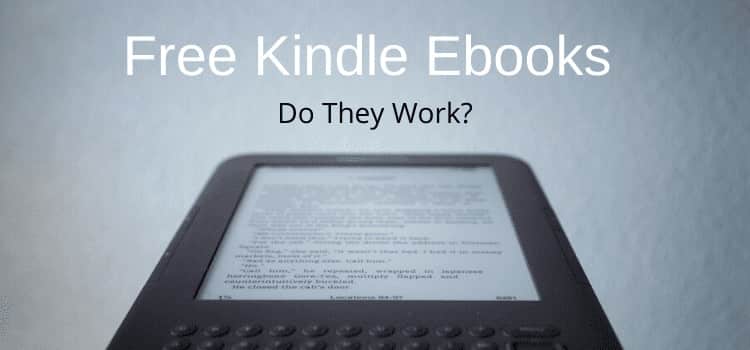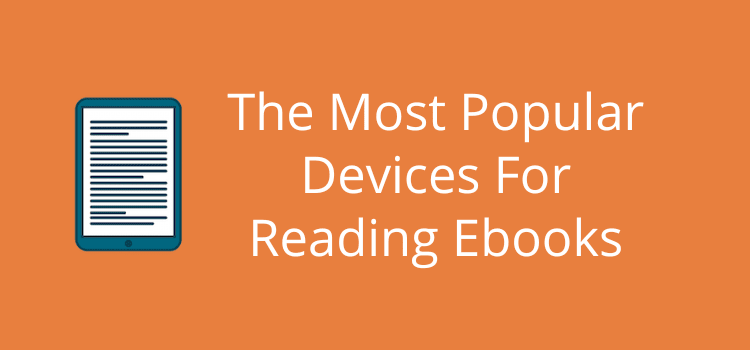
When it comes to reading ebooks, what devices do people use? A dedicated e-reader, smartphone, tablet, or computer?
When the Kindle arrived in 2007, it quickly became the most popular e-reading device.
The first iPad, along with iBooks, was released in 2010, and it looked like it might compete with Kindle. However, the low-resolution screen on early models made for a poor reading experience.
But technology changes rapidly. Today, there are so many devices with high-resolution screens that can deliver an excellent reading experience.
The choice of devices for reading ebooks
It’s no surprise that the annual sales of Kindle e-readers are in decline.
There was no competition back in 2007. But today, readers can use almost any device to read ebooks.
It’s so common now for people to own a laptop or PC, a smartphone, and perhaps a tablet.
When you can read ebooks on any of these, spending more money on a dedicated e-reading device makes little sense.
Yes, the advantages of long battery life and ease of reading are well worth the price for some.
But how many people make this choice?
Statistics for the devices readers use for ebooks is a bit of a guessing game.
Readers can now jump from one device to another to read the same book, making definitive answers impossible.
However, enough data and statistics are available now to gain insight into device use.
Here’s a snapshot of how people read ebooks.
Statistics for ebook reading devices
There are thousands of devices on the market capable of reading ebooks.
I broke the data into four categories for the statistics I gathered from various sources.
1. Computer: It includes laptops, desktops, and notebooks
2. Smartphone: Any phone with Internet and app capability.
3. Tablet: These include iPad, Kindle Fire, or any other tablet brand.
4. E-reader: Dedicated e-reading devices like Kindle, Nook, Kobo, and others.
Depending on the source, some of the data is presented as percentages, while some are by user numbers.
Because people often use more than one device, the data can’t be calculated as a division of 100%.
However, converting the data sources into the same graph form gives a reasonable guide to device usage in different reading markets.
1. United States ebook reading devices
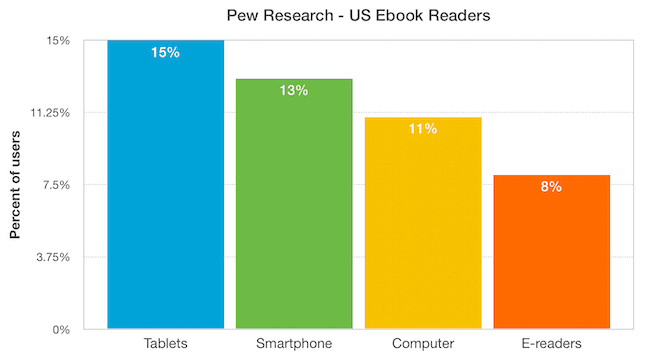
2. Canadian ebook readers
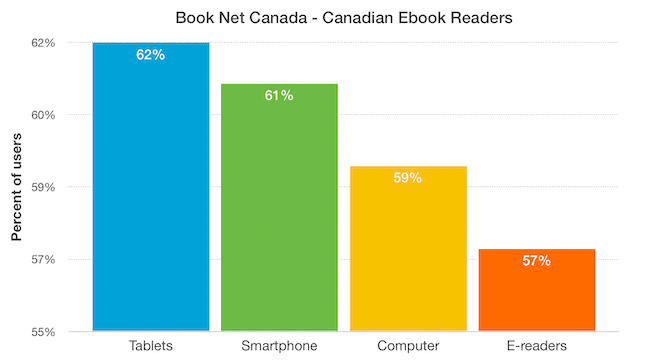
3. Android Police ebook reader survey

4. Pew Research ebook reading
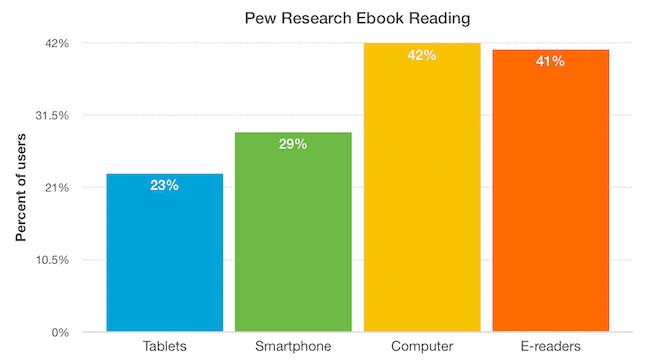
5. EODOpen ebook reading survey
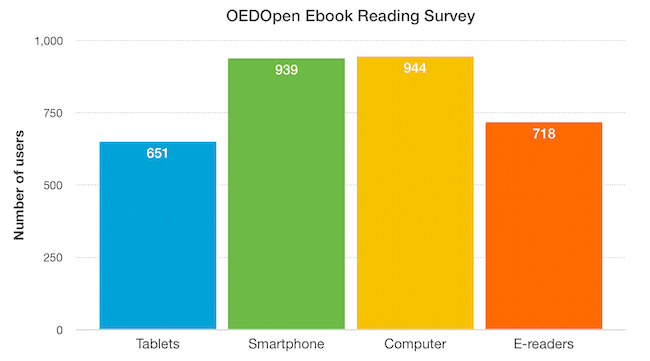
6. French ebook readers
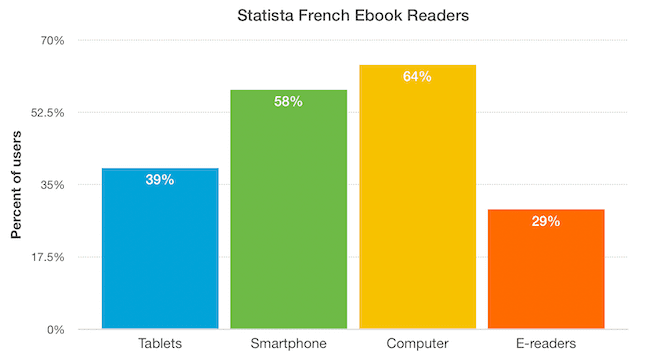
7. German ebook readers
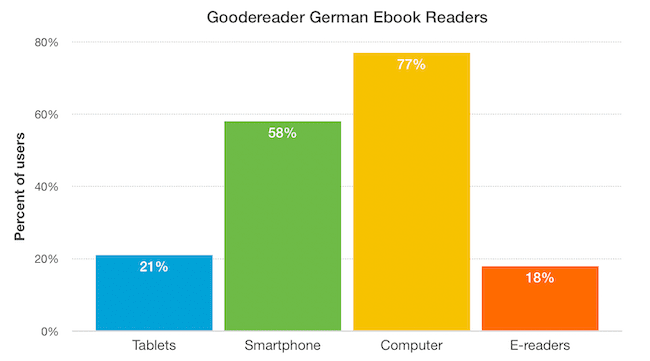
8. Chinese ebook readers
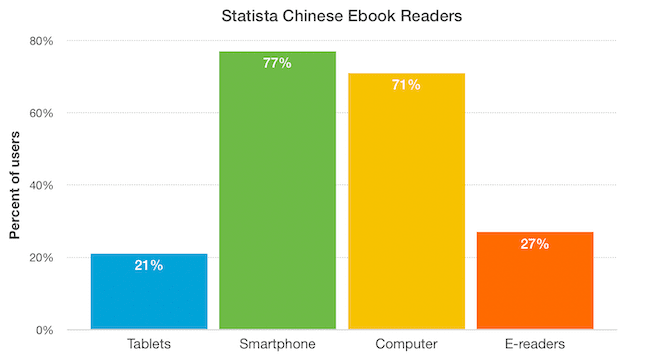
Analysis and data for ebook reading devices
Here is an aggregate of all the surveys in one consolidated graph.
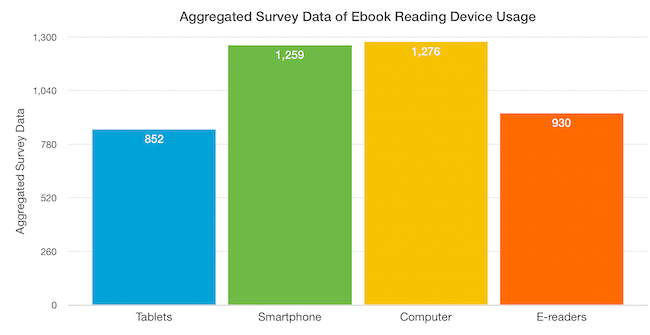
It’s a surprise, but the computer seems to be one of the most popular devices for people reading ebooks, just slightly ahead of smartphones.
The possible reason is that it may be ideal for students now that ebooks are becoming so prevalent in education.
They can access their e-textbooks while completing assignments on their laptop or, perhaps for some, a desktop computer.
However, tablets are more popular in different countries and regions, such as Canada and the US.
What is no surprise, however, is that dedicated e-readers rate relatively low in six of the eight surveys.
The use of devices like the Kindle is especially low in Europe and Asia, where smartphones seem to be the most popular choice.
While it is difficult to find data for Africa, the Guardian reported the results of one survey.
62% of respondents are reading more, now they can read on their mobile phones.
The other possible conclusion is that many of the respondents to these surveys possibly use more than one device to read ebooks.
With the Kindle app, for example, syncing makes it easy to start reading on one device and then continue reading on another.
With so many free reading apps available now, portability like this is extremely easy.
Self-publishing authors perhaps mistakenly assume that readers and ebook buyers will use a Kindle or similar device.
However, readers are using devices that can do much more than show black text on a white page.
It opens up the possibility of using more images in ebooks and perhaps even in color.
Yes, there is a restriction with Amazon KDP because it charges a download fee for large file-size ebooks.
This is not the case with other self-publishing services. You can include as many images as you wish without any deduction from your royalties.
But the big takeaway for authors is to check the formatting of their ebooks carefully.
Before publishing, test them on small and large screen sizes, and be sure an ebook looks great on a phone, tablet, or large desktop screen.
Conclusion
2007 is a long time ago now.
At that time, dedicated e-book reading devices offered clear, sharp, unpixelated text with e-ink technology.
Phones and tablets offered a poor reading experience because the screens were low-resolution, making text difficult or at least tiring to read.
But with the advent of very high-resolution screens on smartphones, tablets, and laptops, there was no longer a compelling advantage for e-readers.
The other significant change is that smartphones are now much larger, which makes ebook reading easier.
When it comes to the choice of devices for people reading ebooks, it’s logical that if one device can do everything, why buy another?
The statistics from the surveys seem to prove this. If a reader owns a laptop and a phone, what more do they need?
In some countries, especially developing countries, the smartphone is the only device.
Yes, if you are an avid reader who reads for hours every day, a dedicated e-reader is still a logical choice if your budget allows it.
When my old Kindle decided to give up the ghost, I checked the price of a new one.
I simply couldn’t justify the price when my iPad did a great job as an ebook reader. And it still does.
I’m sure this is the reasoning for many ebook readers.
Why spend money on a gadget when what you already have will do the job?
Related reading: How To Print Pages Of An Ebook

